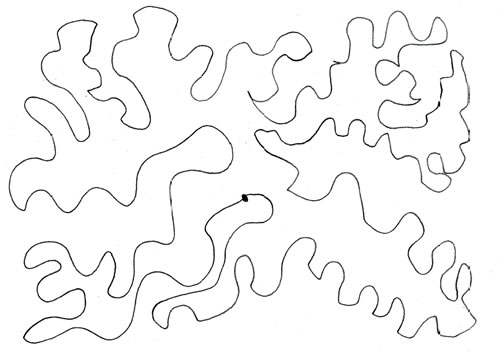How To Draw Elderly People
This is one of many free activities.
Golden Carers has 1000s of activities and resources for senior care.
Drawing is a relaxing activity that many older adults enjoy. As well as an emotional release, drawing also provides opportunities for social connection in group settings. Learn how to lead a drawing session for seniors by following the guidelines in this article.
The Benefits of Drawing Activities
Drawing: a drawing is a sketch, a design, a picture or a diagram representation made with a pen, crayon, charcoal, or coloured pencils.
According to experts, drawing can stimulate the right and left sides of the brain resulting in improved emotional mood and its accompanying benefits:
- Better communication - Residents living with Alzheimer's and other illnesses may express feelings by drawing pictures.
- Improved Coordination - It can delay the loss of muscle control.
- Relaxation - It is a wonderful distraction from the blues, chronic pain, and other stressful situations.
- Pride - There can be immense satisfaction and pleasure taken from drawing projects.
Drawing Supplies
Buy the best supplies you can afford. Supplies should be also safe, familiar, easy to handle and suitable to the skills participants.
- 2B Graphite pencils for general sketching
- Erasers
- A4 paper to practice on
- Quality drawing paper: Buy a '100 page Artist's Drawing Pad'
- Markers (textas), both thick and thin
- Colored pencils for residents who wish to color their projects
3 Drawing Activities for Dementia Care
You may find that some participants will need hand-over-hand assistance and visual/verbal cues. Allow participants to do what they are able to; get involved only when they feel frustrated - helping just enough to complete the project.
Note that markers are not recommended for residents living with dementia for safety reasons.
Here are three ways to start off participants:
1. Continuous Line
Place a blank piece of paper in front of a participant and place a dot in the middle. Provide a drawing pencil and encourage them to do a scribble starting from the dot. The scribble should be continuous - demonstrate if needed - until the page is full of loose lines. Then, you may encourage them to shade or colour the drawing.

2. Draw Emotions
Ask the participant to draw their emotions - a face that shows 'how they feel today': angry, happy, sad. Demonstrate if needed by drawing a face showing how you feel. If this is too hard, encourage them to draw random lines to demonstrate how they feel today, random scribbles, straight lines, zig-zags, anything they feel like doing with the pencil.

3. Join Dots
Place a blank page with a few dots on it here and there and encourage them to join the dots. They may choose to shade or colour the resulting shapes.
Give residents as much time as they need to complete their drawings.

4 Drawing Activities for High Functioning Residents
Remind participants that anybody can produce good drawings. All it takes is practice. Walk around the group and encourage them by offering guidance as needed.
Drawing has several types of expressions: Geometric, analytic, life, and illustration to mention a few. Here are four types of drawings to introduce to participants.
1. Freehand Drawing

Freehand drawings are sketches done by hand without the use of tools eg rulers, compass, triangle. Participants will express themselves using pencils. They may copy another drawing or create their own.
2. Upside Down Drawing
This type of drawing stimulates the left side of the brain (the thinking side). Instead of seeing the picture you see only lines that once connected, form the picture - this is the way artists see! Of course the end product will be a little askew which will generate laughter and interesting conversations. Templates provided.

3. Mandalas
Mandalas are a series of drawing patterns organised around a single, central point. Drawing and colouring mandalas can be a meditative tool; the focus required promotes a peaceful atmosphere and a reflective mood. Participants may draw mandalas free-hand or use compasses, rulers, and other props.

4. Abstract Art Drawing
Abstract drawing or painting means that what you draw does not have to 'look like' anything. It doesn't have to have a recognizable shape. Residents can explore form and colour the way they want. Show pictures of famous abstract artists to inspire the group; among them Vassily Kandisky, Mark Rothko, and Jackson Pollock.

How To Draw Elderly People
Source: https://www.goldencarers.com/7-drawing-activities-for-seniors/6200/
Posted by: fletchersetime.blogspot.com

0 Response to "How To Draw Elderly People"
Post a Comment